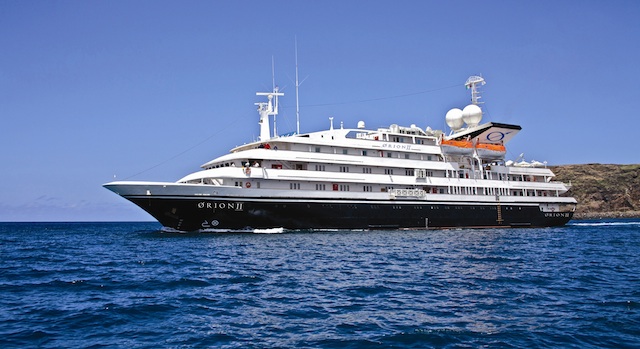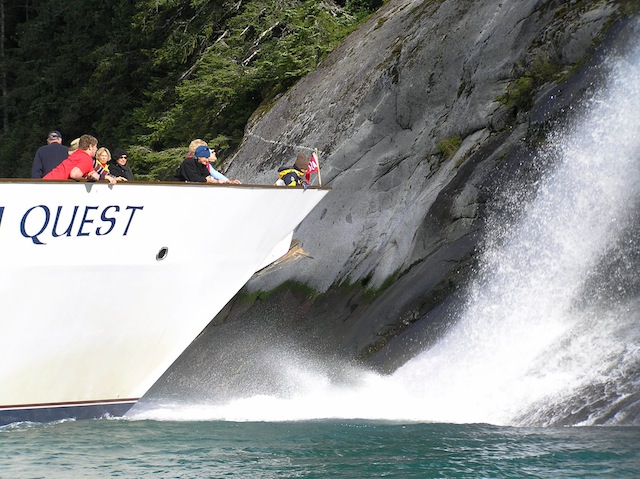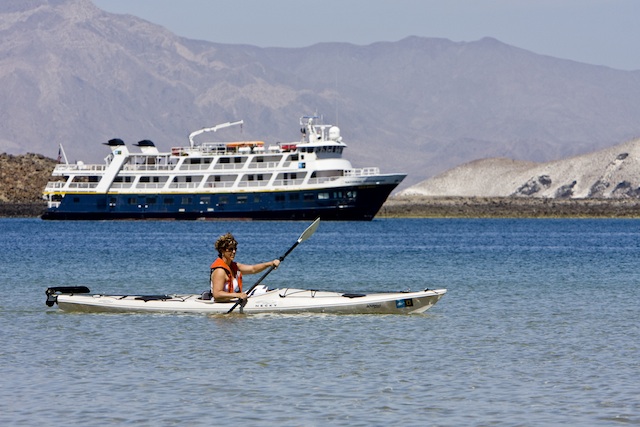The following is the first in a two-part interview with AdventureSmith Explorations founder and president Todd Smith.

In the past decade, cruising has morphed from a dowdy vacation your grandparents took to one of the most popular family options on the travel market. It’s not hard to see the appeal: the ease, all-inclusiveness, and high entertainment value of cruising makes it a tempting choice for families. As founding editor of Pit Stops for Kids, I’ve long said that no type of travel is the wrong type of travel: whatever your family enjoys, the key is to get out there and experience it. However, how you experience it can make all the difference in the world. What most cruising operations offer in fun, they can lack in the ability to provide intimacy with the destination, environment, or culture you traveled to see.
For travel to have its greatest positive impact, access matters, which is why I love the travel philosophy that drives AdventureSmith Explorations, a small ship cruising operation doing big things for family travel. Recently, I was fortunate enough to bend the ear of Todd Smith, AdventureSmith founder and president, to learn more about what makes small ship cruising different than the mega-ship industry standard.
Pit Stops for Kids: You’ve called AdventureSmith the ‘anti-cruising’ option. Tell me about the travel philosophy behind that.
Todd Smith: I have found that standard big ship cruises tend to focus inward, on what is aboard the ship. Large ship cruises boast waterslides, climbing walls, miniature golf, midnight buffets, broadway style entertainment, shopping malls and more. The destination tends to be of secondary importance. Our style of small ship and expedition cruising is the opposite. Our primary focus is outward, on the destination outside the ship. Of course, travelers can expect comfortable cabins, delicious cuisine and a wide range of on board amenities, but most travelers choose a small ship because they want to intimately engage with the destination in an up close and personal way, away from tourist crowds. Cruises aboard small ships offer parents, grandparents, and kids opportunities to experience authentic nature and culture not easily found on other types of tours, in a safe, comfortable and casual environment, as detailed in my blog post comparing big ships, small ships and yacht cruises.

PSFK: AdventureSmith itineraries are highly unique. How would you define ‘adventure cruising’?
TS: The hallmark of adventure cruising is the ability to get off the ship, away from port. This in turn limits the number of travelers. In my experience working aboard small ships for many years, it becomes logistically difficult to achieve effective off-vessel activities on ships with over 150 travelers.
PSFK: Tell me about the various excursions offered on AdventureSmith cruises. How can I ensure I’m selecting off-ship adventures that will be age-appropriate for my kids?
TS: Excursions and activity levels can vary widely by trip. Depending on the region, off-vessel activities may include walking/hiking, kayaking, snorkeling/Scuba diving, paddle boarding, small craft/zodiac excursions, helicopter flightseeing, photography excursions, horseback riding, trekking, cave exploration, overnight camping, dog sledding, and more. Since activities also vary for travelers with kids, the following are my suggestions for various age levels:
For kids under six, I recommend sticking to easy activities where mom and dad can handle restless youngsters for a short period of time. Easy walks, short zodiac or glass bottom boat excursions, and city tours top the list. These activities are also great for older grandparents who are not as agile as they used to be.
For six to eight-year-olds, I recommend the above activities plus longer walks, easy kayaking, swimming, fishing, and photography. Kids this age love to explore the world in a physical way. Don’t be afraid to get them off the boat to experience surroundings up close! Stick to shorter duration (one or two hour) excursions.
8-12-year-olds can endure longer excursions (1-3 hours) featuring the above activities, plus snorkeling, paddle boarding, horseback riding, cave explorations, and even overnight camping. Kids this age become the best friend of naturalist guides. Let them be in front of the group, asking questions and engaging with the trip leaders and other travelers!
Kids over 12 years old are suitable for almost all activities offered aboard small ship cruises, depending on maturity and ability. Let them challenge themselves and they will become confident explorers. Ask them to keep a journal or blog of their experiences to share with classmates or family at home. Buy them guidebooks and identification guides to learn about what they are seeing. Encourage them to learn a few phrases of the local language and set out to engage with locals.
Most small ship cruises offer a variety of activity levels. Our specialty in the small ship cruise marketplace is to match travelers with cruises that fit their interests, ability, and budget. A benefit of AdventureSmith is the ability to speak with an expert who has been on-board and can compare one ship or trip versus another to help match you with your desired activity level.

PSFK: I have active, school-aged kids. One of the draws of mega-cruise ships for families is the abundance of on-ship activities and programs. How does an AdventureSmith ship or yacht compare?
TS: Small ships are quite different in that they don’t have as many on ship activities and diversions. However, this style of travel inherently brings families together through shared experiences in which they learn about the destination, grow personally, and create memories that will last a lifetime. Large ships offer distractions such as supervised play areas, rock climbing walls, and miniature golf that keep the kids occupied, but ultimately separate families. Small ships are inherently designed to bring families together in a safe, comfortable setting.
PSFK: Tell me about the eco-benefits to small ship cruising.
TS: Small ship cruises are eco-friendly for a number of reasons. A small ship is a closed system and inherently low impact. Impacts of on-board consumption (food, hotel supplies etc.) and off-vessel discharge (recycled material, food waste, sewage etc) are generally limited to population areas which can handle this additional infrastructure (but are not overwhelmed by it). Small ships primarily cruise close to shore and are not allowed to discharge waste into the ocean (in most locations), a common practice aboard big ships. Limited on-board space forces small ship crews to reduce, reuse, and recycle as much as possible.
Small ships are often locally owned and operated, keeping passenger payments in the local economy. Local food vendors, fuel suppliers, restaurants, hotels, and transportation services are all used in conjunction with small ship cruises, and small ships often hire local guides and crew, again supporting local economies, and often providing seafaring cultures an alternative to resource extractive industries.
And of course, taking guests ashore in pristine wilderness or among authentic cultures creates a connection between the traveler and the place. Once that connection is established stewardship often follows. We hope that through our trips and conservation programs, travelers will become engaged with conservation and humanitarian issues in the destinations they visit, and in their local community when they return home.





